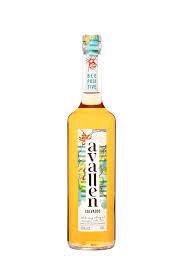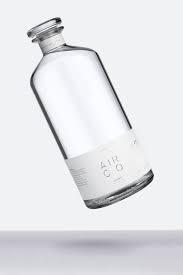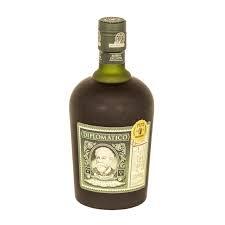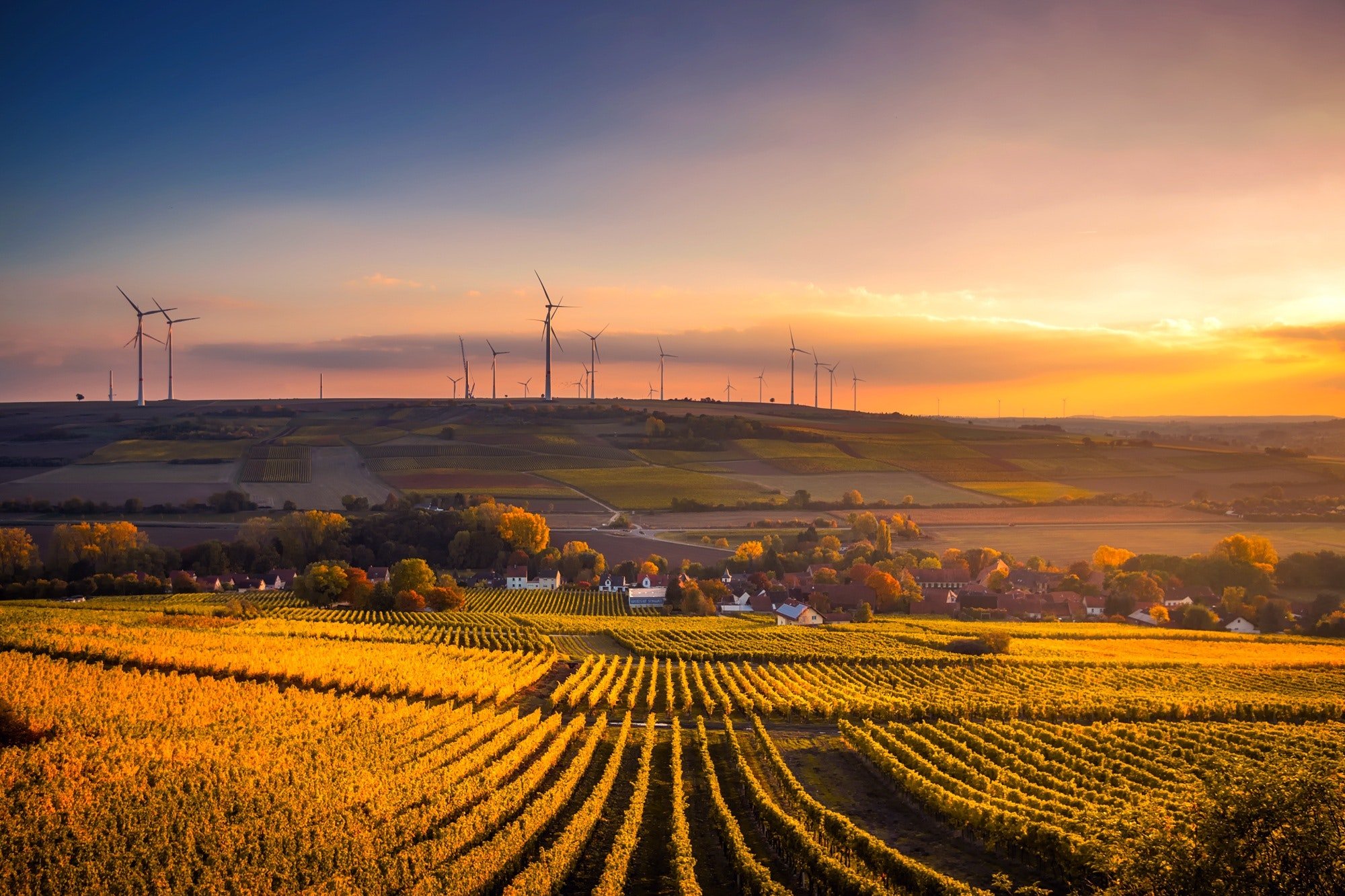With the state of the world right now, there are so many reasons to reach for a drink. But to pile onto the problems, wine and spirits are wildly wasteful to produce. On average, every liter of alcohol produces an additional 15 liters of waste material. One bottle of bourbon whiskey requires a whopping 13 liters of water. That’s not considering the water needed to grow barley, corn, grapes, and other crops, clean them, and cool them to the correct temperature. After you’ve finished the last drop of drink, each bottle leaves a trail of detriment from undrinkable wastewater, spent grains and grapes, and byproducts of labeling and bottling. Factor in the energy needed to harvest, process, store, bottle, brew, distill, or ferment, and distribute the bottle to shelves and the actual cost of spirits can be sobering.
But don’t let this put a damper on your happy hour. Producers are becoming increasingly aware of their impact, and many of the world’s best booze makers are cruising towards carbon neutrality.
What makes a spirit sustainable? Is it the quality of raw ingredients? Do they use pesticide-free grapes or locally grown grains? What about the brand’s philanthropic efforts? Are the employees paid a fair wage, and is the local community considered? What about energy sourcing?

 It’s a lot to consider, but ideally, it’s a bit of everything. “Alcohol starts its life in orchards, fields, farms, so sustainability has to start there,” says Tim Etherington-Judge, a former national brand ambassador at Diageo and now-founder of Avallen.
It’s a lot to consider, but ideally, it’s a bit of everything. “Alcohol starts its life in orchards, fields, farms, so sustainability has to start there,” says Tim Etherington-Judge, a former national brand ambassador at Diageo and now-founder of Avallen.
“Sustainability is a spectrum,” says bartender McLain Hedges of Manhattan’s Hidden Leaf. “It can involve any number of reflective practices to lessen the negative impact on the earth and the people involved. Farming practices, bottle and label sourcing, water usage, type of adhesives used, CO2 emissions, shipping, and transportation, paying employees a livable wage, fighting for social changes that impact the lives of their community, and reinvesting profits in the communities from which the spirits originate, water usage. All of these factors contribute to sustainability.”
The International Wine and Spirits Competition (IWSC) asks sustainable brands to hire from nearby, support the local supply chain, repurpose raw materials (reducing single-use plastics, recycling casks, and using alternative energy sources), and source ingredients consciously.
Essentially, it’s up to a brand how they want to pursue sustainability—there’s no copy-and-paste solution to a cleaner planet.
In Mexico, tequila creates 5 kilos of agave pulp and 11 liters of waste per liter. Traditionally, this is dumped into local waterways, polluting community water supplies. Sombra Mezcal takes the pulp and waste and dries it in the sun. Once cooked, the bricks are used to build homes for locals displaced by local earthquakes.

Tequila Cazadores uses its waste, sawdust, coconut shells, and tree cuttings to fuel its carbon-neutral distiller. If they have excess, it’s repurposed into fertilizer.
Beyond raw materials, Patron hires hyper-locally and offers a robust education fund for staff pursuing degrees or certifications. Tanteo Tequila—chipotle and jalapeno-spiked tequilas producer—provides music lessons and daycare for children, English lessons for adults, vocational training, and free primary medical care. The distillery is owned by a cooperative of local (primarily female) farmers.
(Curious about your favorite tequila? Website and app Tequila Matchmaker catalogs responsibly-produced bottlings.)
 If martinis are more your staple, Air Vodka is completely carbon-negative, made via a distillation system fueled entirely by solar energy. The silky vodka is made with just two ingredients: carbon dioxide (CO2) and water—no grains, no potatoes, no flavoring. The company does this by using electrolysis to remove the hydrogen from the water, releasing oxygen. The hydrogen is then fed into a “carbon conversion reactor” to create ethanol without any organic component. For every bottle produced, a pound of greenhouse gas is removed from the air.
If martinis are more your staple, Air Vodka is completely carbon-negative, made via a distillation system fueled entirely by solar energy. The silky vodka is made with just two ingredients: carbon dioxide (CO2) and water—no grains, no potatoes, no flavoring. The company does this by using electrolysis to remove the hydrogen from the water, releasing oxygen. The hydrogen is then fed into a “carbon conversion reactor” to create ethanol without any organic component. For every bottle produced, a pound of greenhouse gas is removed from the air.
Canada’s Vodkow makes vodka out of leftover whey from local cheese makers. It’s gorgeous in a martini, with subtle, creamy undertones. British-based Black Cow Vodka also calls for cheesemaker’s leftovers, translating what would be discarded into a rich base for an espresso martini.
 In the rum world, Diplomatico focuses its sustainability on the local rainforest, zeroing in on replanting native tree species with funds generated by their rum sales. Since the program started, the brand has replanted over 16,000 species of trees in the Venezuelan rainforest. The distillery runs on self-sustaining energy and transforms all liquid waste into fertilizer for its fields and for all surrounding farms and families.
In the rum world, Diplomatico focuses its sustainability on the local rainforest, zeroing in on replanting native tree species with funds generated by their rum sales. Since the program started, the brand has replanted over 16,000 species of trees in the Venezuelan rainforest. The distillery runs on self-sustaining energy and transforms all liquid waste into fertilizer for its fields and for all surrounding farms and families.
In the wine world, sustainability is just as wide-sweeping. Some producers skip sulfites; others use sheep to control pests and weeds rather than pesticides. Producers like Iuli and Envinate work to rehabilitate almost-extinct grapes to preserve a wine region’s heritage. At the same time, Ashanta in California will forage wild fruit around Los Angeles to make expressive, singular, slightly experimental wines.
Martha Stoumen grows organic grapes and makes natural wines out of California. The commitment to land stewardship means she spends much more time in the vineyard, pruning and caring for the vines to ensure they thrive without synthetic fertilizers. Still, that time translates into joyful wines with a very distinct identity.
With all these different factors, how do you figure out if brands practice what they preach? “It’s tricky!” says Holly Berrigan, the founder of MYSA Wine Shop. “How will you know when you’re in a wine store and see a bottle on the shelf?” She tracks importers and retailers who work with sustainable and thoughtful products and looks for vegan, organic, or biodynamic labels.
(Although, greenwashing—where a company touts sustainability initiatives but lacks genuine efforts—is rampant. “Limited edition paper bottles won’t make a dent in CO2 emissions, just like banning plastic straws won’t change the vast quantities of plastic in our oceans,” says Etherington-Judge. It’s about real, holistic change.)
“Not to mention certifying your product as USDA Organic costs a ton of money for small businesses,” says Hedges. Many organic products may forgo the official label in favor of financing other sustainable initiatives. Berrigan notes that “almost all natural wine producers are self-funded. They’re doing the work themselves. That typically means they make less margin and work much harder to ensure quality and avoid the shortcuts that can hurt the environment or be less than natural for the consumer.”
When Remy Drabkin set out to soup up the sustainability measures at her Oregon winery, she knew she couldn’t finance everything at once. So she built the framework for future endeavors, like a roof designed to support a solar panel system one day.
“Long-term sustainability is setting yourself, and ourselves, up for the future,” says Drabkin.






